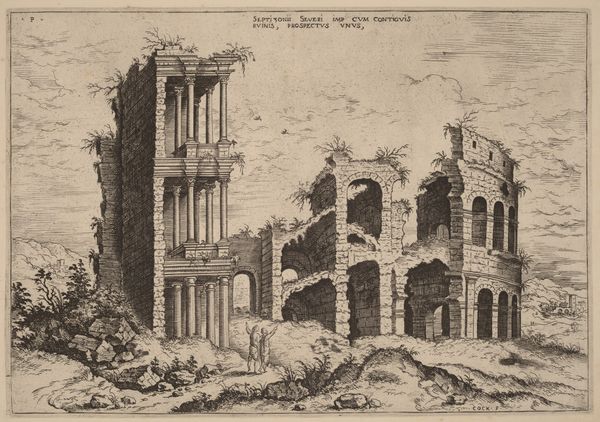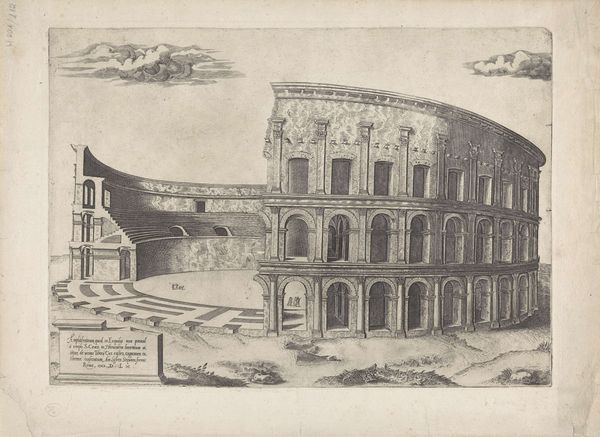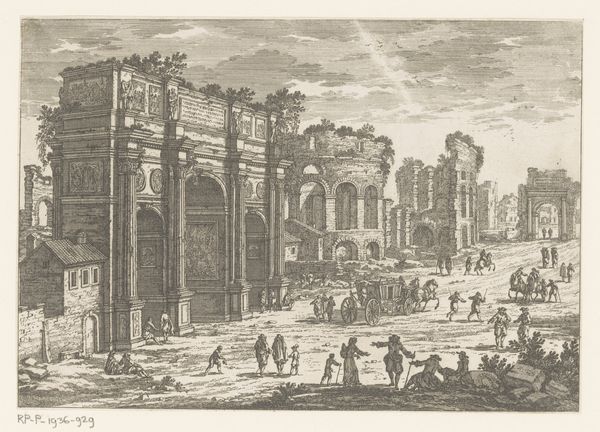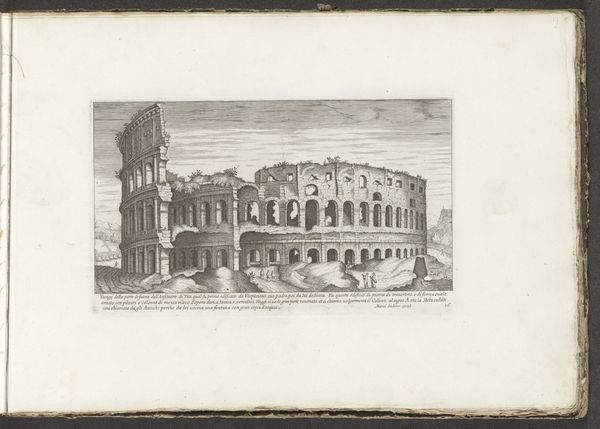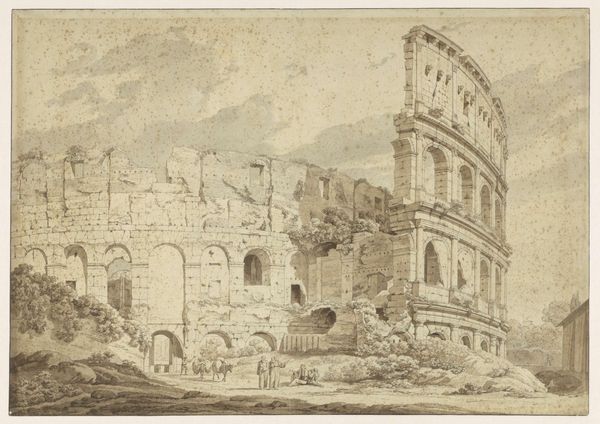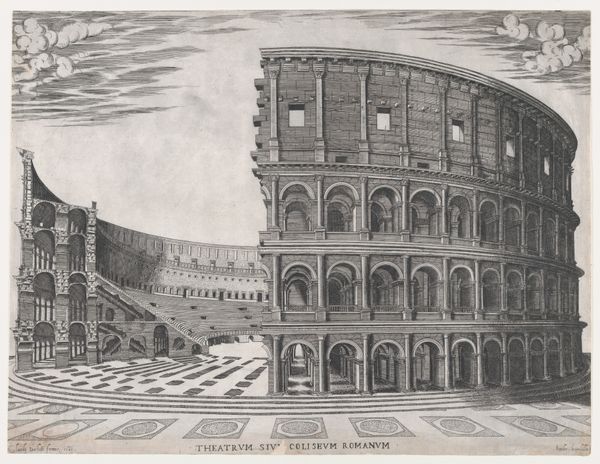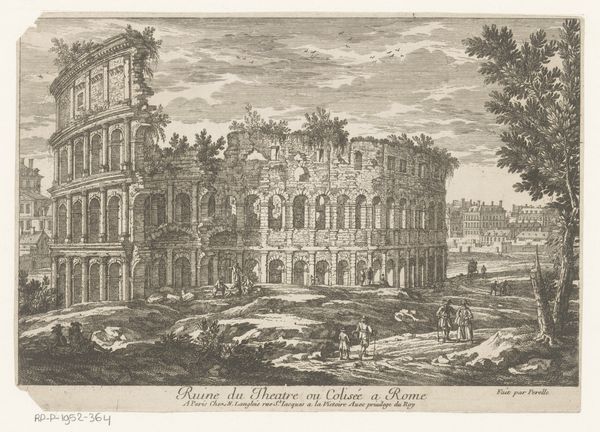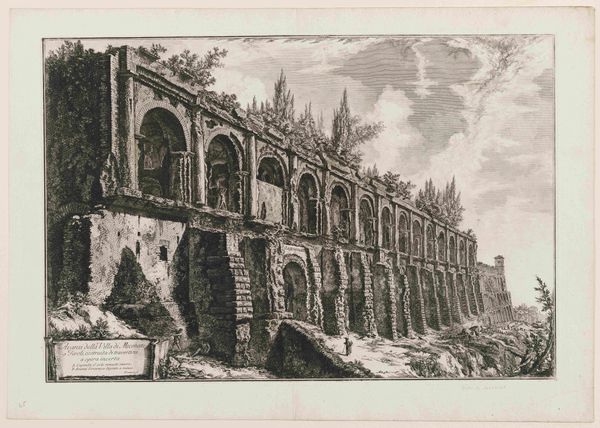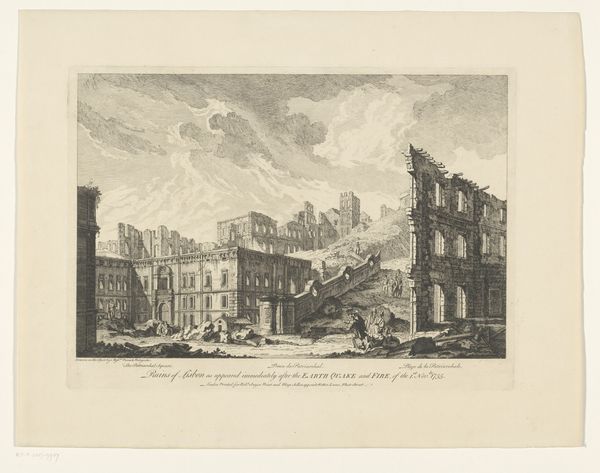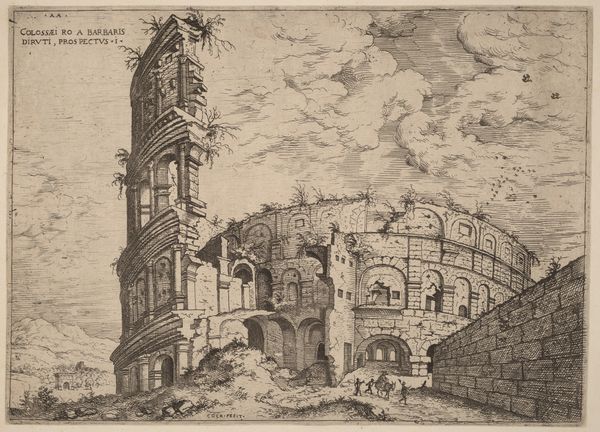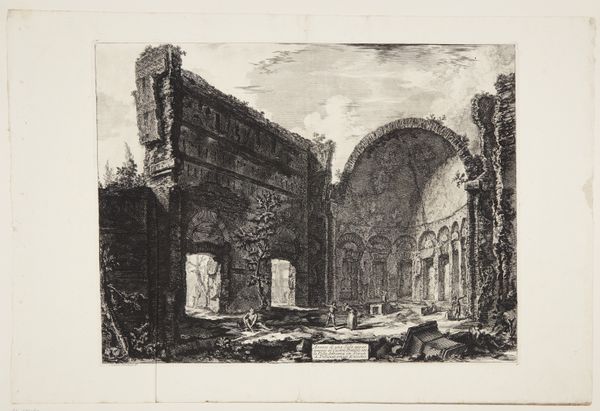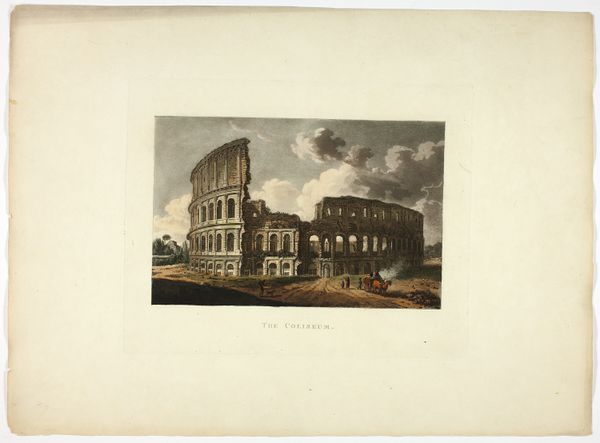
print, etching, engraving, architecture
#
neoclacissism
# print
#
etching
#
landscape
#
romanesque
#
cityscape
#
engraving
#
architecture
Dimensions: height 394 mm, width 534 mm
Copyright: Rijks Museum: Open Domain
Editor: This etching by Jean Barbault from 1761, titled "View of the Colosseum in Rome," is really striking. The Colosseum looks massive, yet fragile. What social narrative do you think the artwork depicts? Curator: It's a poignant image. Barbault created this during the height of Neoclassicism when Rome was a crucial site for the Grand Tour. However, he deliberately portrays the Colosseum in ruins. What does that suggest to you about the artist’s perspective, and maybe the broader view of Europe’s colonial ambitions in that period? Editor: Hmm, maybe that looking to the glory of Rome simultaneously revealed the futility of empire. Curator: Exactly. Barbault isn't just documenting; he's offering a critique. The inclusion of contemporary figures amidst these ruins raises questions. Are they tourists? Are they looters? How does their presence complicate our understanding of the artwork's message? Editor: So, it’s not just about history but about how history is being consumed or exploited in the present? Curator: Precisely. It makes us confront who gets to claim history and how that impacts our own identities. Notice, too, how the figures almost seem to be dwarfed. Do you think it conveys a message of insignificance in the face of history and moral decay? Editor: Yes, and that Rome isn’t simply a backdrop; it's a site of active cultural and social engagement. This has a far stronger impact than it first appeared. Thanks for elaborating! Curator: And thank you for sharing your thoughts. Reflecting on this, I consider the layers of colonialism involved in creating art objects such as this print. There are complex messages hidden behind what may seem to be a pretty and picturesque work.
Comments
No comments
Be the first to comment and join the conversation on the ultimate creative platform.

